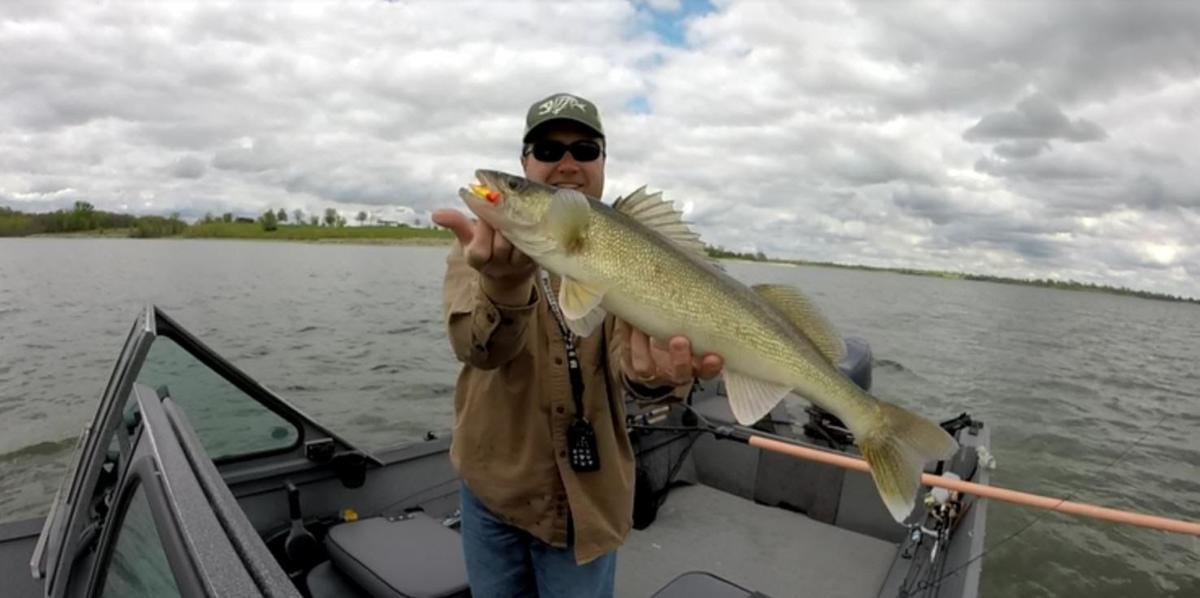How To Catch Walleye And Where To Find Them In Warm Water
Walleyes are known as finicky biters under the best conditions, but they can be particularly tough once the water warms into the 70’s. The question of "how to catch walleye?" is especially trivial once they leave the easily found spawning grounds for parts unknown – making the chance at a fresh walleye dinner akin to the proverbial needle in a haystack.That said, walleye movements during the warm water period of the summer can still be predictable, if you know what you’re looking for – something that will depend greatly on the type of water you are fishing. Walleyes in rivers and reservoirs act very differently than walleyes in lakes, and the same can be said for big water walleyes.To help you stay on the bite, we put together the following guide for locating and catching warm water walleye in each of the three common water body types.
1. Warm Water Walleye In Natural Lakes
Where To Find Them:
Surprisingly, walleye are not actually native to most natural lakes. If they’re in there, it’s probably because someone stocked them at some point. For that reason, small natural lakes can be the hardest to pinpoint summer walleyes on – but the key is to focus on transitions. Walleyes in natural lakes like to roam, and they use transition areas to move from place to place. Break lines, grass edges, points, and offshore humps are all transitions of one form or another, and they will all hold summer walleyes. Choose the most common transition that your lake has, and pick it apart. If it’s a clear rocky lake – look for offshore rock humps and breaks. If it’s got a lot of weeds, target the deep weed transition line.
What To Throw:
Natural lake walleyes are suckers for jig/livebait combinations, slip bobbers, and lindy rigs. Try dragging a light 5/16 ounce jig and a minnow, or set up slip bobbers off a deep water hump rigged with frisky leeches. At night, lake walleye also respond well to artificials like cranks and stickbaits worked through those same areas.
2. Warm Water Walleye In Rivers & Reservoirs
Where To Find Them:
Once the water warms, river and reservoir walleyes will commence feeding on active schools of baitfish, often relating to the old river channel or deep river pools. Look for unique locations on the channel, and focus your efforts there. Outside bends, channel breaks with stumps or rock, and anywhere the channel comes close to the bank can be dynamite locations because they focus and direct current flow. River and reservoir walleyes are also very depth consistent, so try different depths along the channel (edges vs. bottom) and once you locate the fish, run that depth in other similar places.
What To Throw:
Reservoirs often allow trolling, and that is the numero uno method for locating active walleyes. Both cranks and crawler harnesses can be effective depending on the day, so experiment with both until you see which works best. In reservoirs with lots of timber, pitching jigs and plastics or setting slip bobbers like Stan's Slip Bobbers close to the wood can also excel. On river systems, try working eddies, pockets, and deep runs with a jig/plastic combination or a lindy rig.
3. How To Catch Walleye In Warm Water Great Lakes
Where To Find Them:
The big water can be overwhelming for novice anglers, because even though there are a lot more walleyes, there is a lot more space between them. For that reason, you’ve got to focus not on the walleyes themselves, but rather on what’s going to bring them in – baitfish. Spend time looking for baitfish on your locator, or at least the depth range where you’re seeing the most baitfish, and start in those areas. Also pay attention to above water clues indicating baitfish presence as well, like bird activity or surface dimpling.
What To Throw:
On the big water, the trollers are king. Create as large a spread as possible, and experiment with different speeds and lures until you locate fish. Cranks like the Live Target Bait Ball are most effective early in the summer, and crawler harnesses become the standard once it gets up into the mid-70s. Don’t be afraid to look for suspended fish either, as walleyes in big water will commonly follow baitfish up to within 10 feet of the surface well over deeper water.
Updated September 28th, 2020 at 9:55 AM CT


